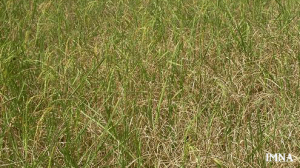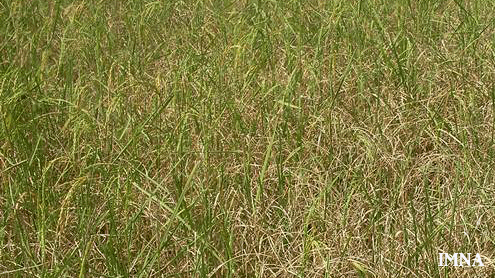
Jaloon Htaw :
Due to both poor rice harvests following the 2009 rainy season, and planting delays caused by this year’s extended dry season and rampant water shortages, rice prices in Mon State are now dramatically higher than they were in May 2009, and farmers from the region claim that prices will only continue to elevate.
The 2009 rainy season in Mon State was plagued by widespread flooding and pest infestations, resulting in massive crop damages and extremely poor harvests, resulting in high rice prices during 2010.
“From my 30 acres, I got [harvested] only 500 baskets of rice. Regularly, it [my farm] grows 1,400 baskets of rice. Not only our farm, but also other farms in the town had decreased harvests,” said a farmer from Mudon town.
During a normal rice farming season, paddy rice is harvested in December. This year’s delayed rainy season means that harvest time, and a fresh influx of rice on the Burmese market, will be pushed back; rice scarcity, and hence high rice prices, will continue for a prolonged period.
“Also, now the rain is very late, there is a water shortage, and the prize of rice is still increasing,” the Mudon town farmer added.
According to a Moulmein-based rice trader, who conducts trade between the city and Three Pagoda Pass Township, on May 1st 2010, the price of a standard 64 kilogram bag of rice increased by 3,000 kyat across the board. High quality rice is now is 31,000 kyat per bag, average quality rice is 28,000 kyat per bag, and low quality rice is 22,000 kyat per bag.
“Last year in May, the good rice cost for one bag, only 17,000 kyat.. Now even though rainy season has not yet arrived, the prices are going up, so the price [of rice] will increase more than it is now, because [we will have to wait] a long time for the new paddy [rice to be harvested]” she explained.
According to a rubber plantation owner from Mudon Township, this year’s extended rainy season and extreme water shortages have resulted in low harvests of rubber sap. Plantation owners fear that they will not gain sufficient income this year to afford the steadily increasing price of rice, especially as prices for their meager rubber harvests have declined, and rubber sap production will cease in the upcoming rainy season.
“Now rubber prices are decreasing and the rice prices are increasing. It will soon become the rainy season, and the rice prices will go up more than they are now. So we will have problems buying rice,” he told IMNA.

